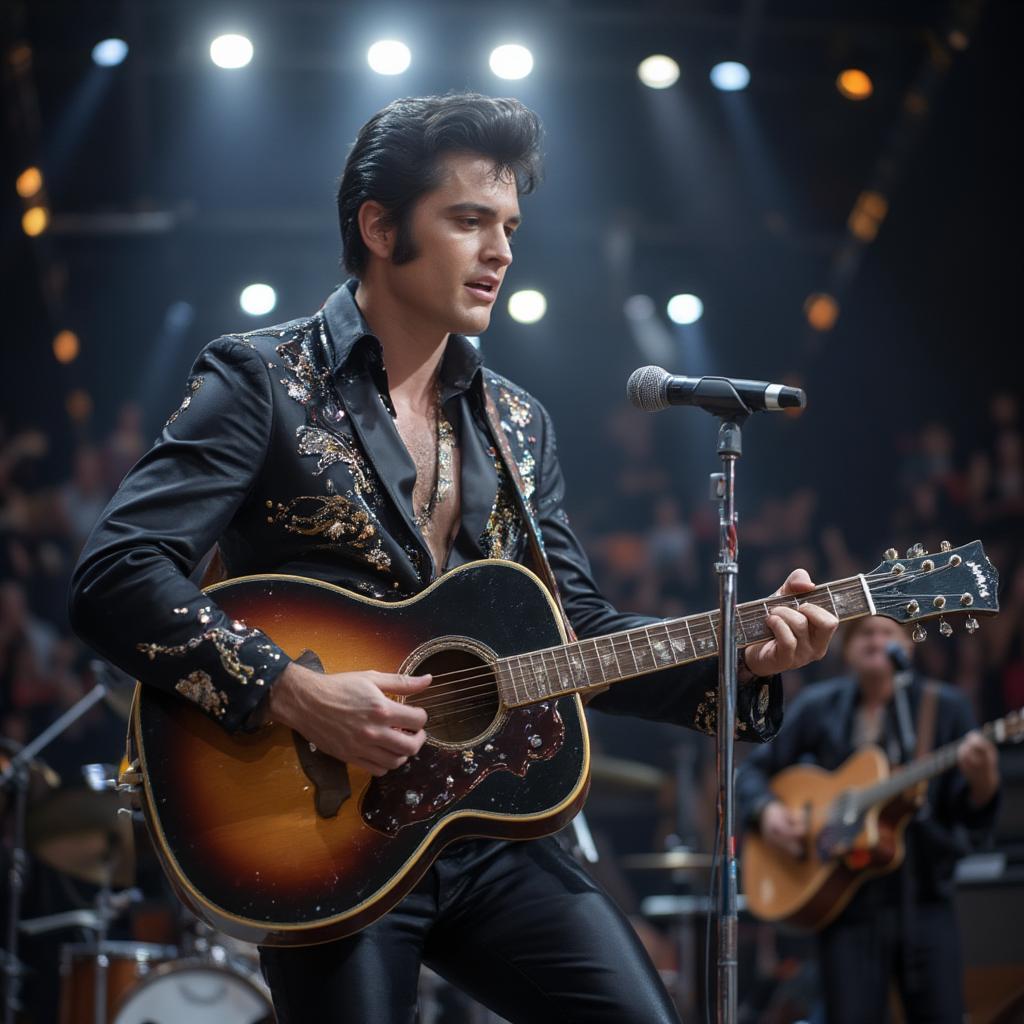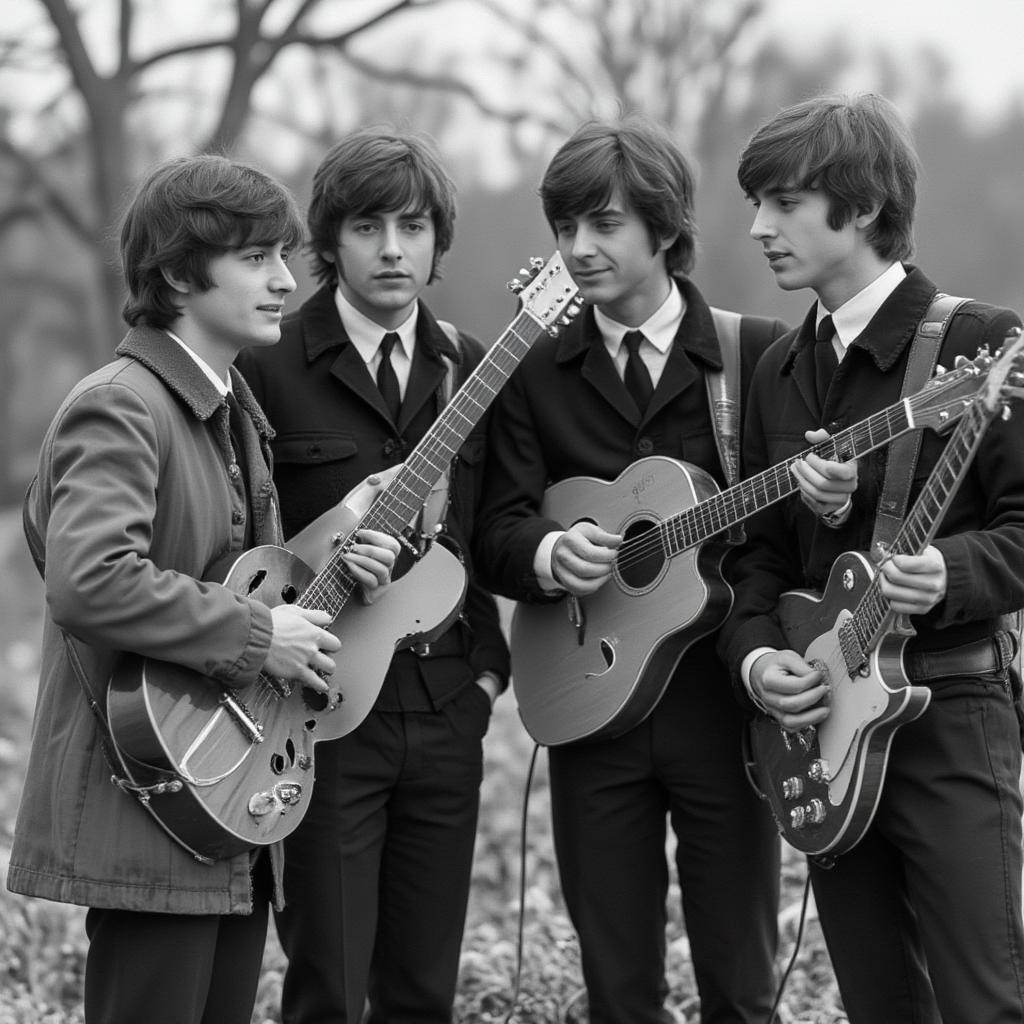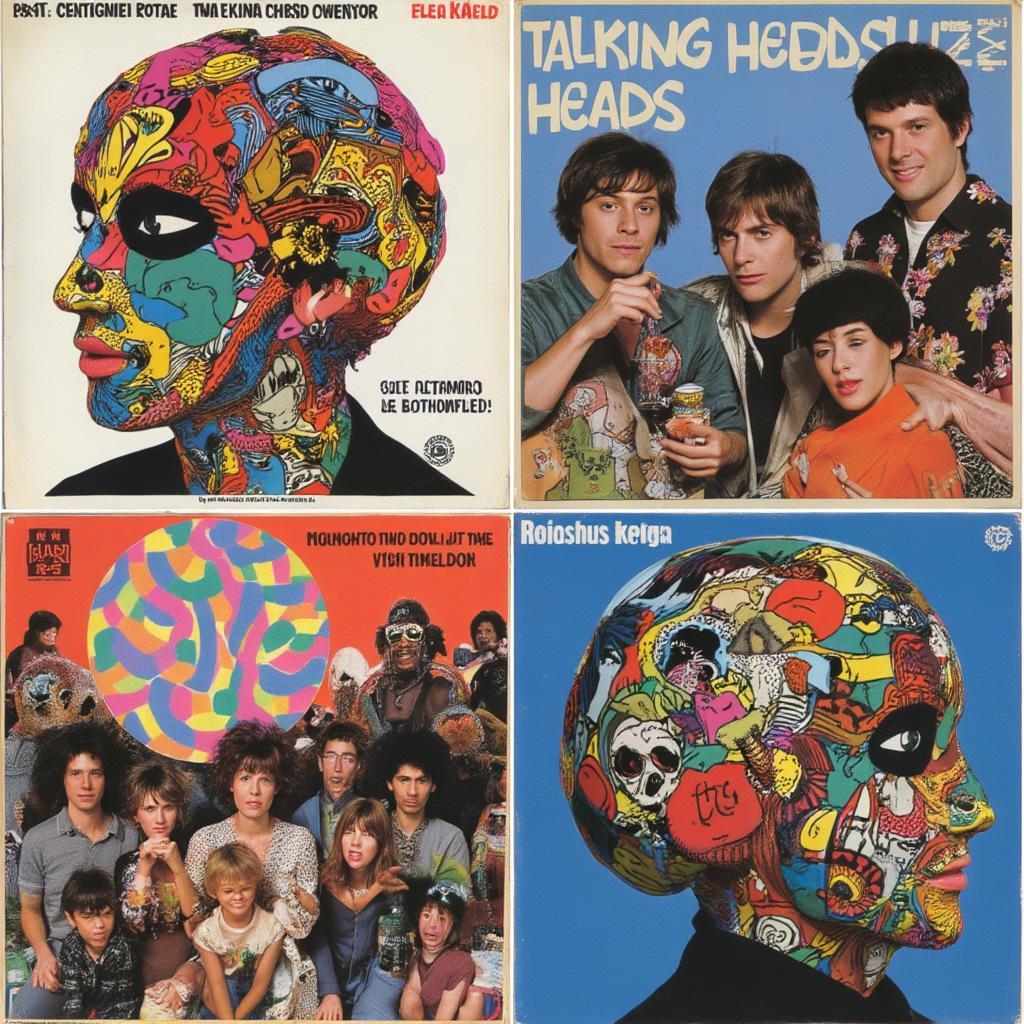Dive into the Heart of 50s Rock n Roll: The Sound That Defined a Generation

The 1950s. A time of poodle skirts, drive-in movies, and a musical revolution that continues to resonate today: 50s Rock N Roll. This isn’t just a genre; it’s a cultural phenomenon, a seismic shift in the soundscape, and the very foundation upon which much of modern music is built. From the raw energy of electric guitars to the infectious rhythms that made you want to get up and dance, 50s rock n roll captured the rebellious spirit of a new generation. Let’s explore what made this era so iconic and why its influence endures.
The Birth of a Sound: What Defines 50s Rock n Roll?
What exactly makes 50s rock n roll so distinctive? It’s a combination of several key elements:
- The Blues Foundation: Deeply rooted in the blues, 50s rock n roll borrowed its soulful feel and chord progressions. Think of those driving basslines and the raw, emotional vocals.
- Country Influence: Country music’s storytelling and twangy guitar licks added another layer of character. You can hear it in the upbeat rhythms and the subject matter of many early rock n roll songs.
- Rhythm and Blues Rhythms: The infectious, danceable rhythms of rhythm and blues were crucial. This provided the backbeat that made 50s rock n roll so irresistible.
- Electric Amplification: The advent of the electric guitar and amplification was a game-changer. This allowed guitars to take center stage, providing a new level of energy and volume.
- Rebellious Spirit: 50s rock n roll was the soundtrack to a generation’s rebellion against conformity. It was loud, it was brash, and it was definitely not your parents’ music.
These elements combined to create a unique sound that was both familiar and revolutionary. It was music that was meant to be felt, not just heard.
Key Artists Who Shaped 50s Rock n Roll
The 50s were full of musical innovators who pushed the boundaries and changed music forever. These are just a few of the giants that contributed to the sound of 50s rock n roll:
- Chuck Berry: The master of the guitar riff, Berry’s songs were full of energy and wit. His signature duckwalk and stage presence made him a true rock n roll icon.
- Elvis Presley: “The King” himself. Elvis brought a raw sexuality and charisma to the stage that had never been seen before. His blend of blues, country, and gospel created a whole new sound.
- Little Richard: With his flamboyant style and high-energy performances, Little Richard was a force of nature. He brought an explosive intensity to rock n roll that was simply unforgettable.
- Buddy Holly: A pioneer of the “nerdy” rocker, Holly’s innovative songwriting and clean guitar style influenced countless artists. His catchy melodies and heartfelt lyrics still resonate today.
- Jerry Lee Lewis: “The Killer”. Lewis brought a wild, untamed energy to the piano. His performances were legendary, full of passion and raw talent.
These artists and many others shaped the landscape of 50s rock n roll, each bringing their own unique voice and style to the genre.
The Impact of 50s Rock n Roll on Popular Culture
The effects of 50s rock n roll were far reaching, extending beyond just music. It impacted:
- Fashion: From poodle skirts and saddle shoes to leather jackets and slicked-back hair, the fashion of the 50s was heavily influenced by the rock n roll scene.
- Social Norms: This genre challenged traditional social norms, giving a voice to teenagers and their growing sense of independence.
- Dance: New dance styles like the jive and the twist emerged, fueled by the infectious beats of 50s rock n roll. It was music that made you want to get up and move.
- Film: Rock n roll was prominently featured in movies like Rebel Without a Cause and Jailhouse Rock, which further cemented its place in popular culture.
- The Music Industry: 50s rock n roll laid the groundwork for the modern music industry, changing everything from the way music was recorded to how it was marketed.
As Dr. Eleanor Vance, a music historian at the University of California, Berkeley, says, “50s rock n roll wasn’t just music; it was a cultural revolution. It gave young people a voice and a sense of identity, something that had been missing.”
The Guitars of 50s Rock n Roll: Tools of the Trade
The electric guitar was absolutely central to the sound of 50s rock n roll. These guitars weren’t just instruments; they were symbols of rebellion, innovation, and raw power. Some key models included:
- Fender Stratocaster: Known for its bright, cutting tone and versatility. The Strat became a favorite of many 50s rock n roll players.
- Fender Telecaster: The Telecaster’s robust construction and twangy sound made it perfect for the driving rhythms of the genre.
- Gibson Les Paul: With its warm, rich tone and sustain, the Les Paul was a favorite of players looking for a thicker, more powerful sound.
- Gretsch Guitars: Used by artists like Eddie Cochran, these hollow-body guitars provided a unique sound that was both punchy and resonant.
- Semi-Hollow Body Guitars: Providing a middle ground between the solid and hollow body sound, these guitars were favored by players wanting a versatile tone.
These guitars weren’t just tools; they were extensions of the artists, allowing them to express their creativity and passion in new ways.
Why Does 50s Rock n Roll Still Matter Today?
The music of the 50s may have been born over half a century ago, but its influence continues to be felt. Its raw energy, catchy melodies, and rebellious spirit remain compelling and relevant.
Here’s why it still matters:
- Foundation of Modern Music: 50s rock n roll is the foundation upon which much of modern music is built. You can hear its influence in countless genres, from rock to pop to punk.
- Timeless Appeal: The themes of love, loss, rebellion, and freedom explored in 50s rock n roll are timeless and universal. These are feelings that will always resonate with people of all ages.
- Infectious Energy: The music of the 50s is full of an infectious energy that is hard to resist. It makes you want to move and groove, no matter how old you are.
- Connection to the Past: Listening to 50s rock n roll allows us to connect with a pivotal moment in music history and see how far we’ve come.
- Inspiration for Future Generations: 50s rock n roll continues to inspire new generations of musicians, showing them the power of raw energy and authentic expression.
According to Marcus Bellwether, a guitarist and music producer, “The magic of 50s rock n roll lies in its simplicity. It’s about pure emotion, raw energy, and honest expression. That’s something that will always be relevant.” To delve deeper into the influence, you might be interested in exploring more about the [2022 rock hall of fame] that acknowledged some of the pioneers within the genre.

How to Experience the 50s Rock n Roll Vibe Today
Want to dive into the world of 50s rock n roll? Here’s how:
- Listen to the Classics: Start with the iconic artists mentioned above – Chuck Berry, Elvis Presley, Little Richard, Buddy Holly, Jerry Lee Lewis, and more. Explore their discographies and discover the depth and diversity of 50s rock n roll.
- Watch the Films: Check out movies like Jailhouse Rock, The Girl Can’t Help It, and Rock Around the Clock. These films capture the energy and excitement of the 50s rock n roll scene.
- Learn to Dance: Get your groove on! Try out dance styles like the jive, the twist, and the stroll. It’s a fun and energetic way to experience the music of the era.
- Attend a Show: Seek out live shows that feature 50s rock n roll. There are bands all over the world who keep this music alive, providing an authentic and exciting experience.
- Pick Up a Guitar: Why not learn to play some 50s rock n roll riffs yourself? It’s a rewarding and fun way to engage with the music.
So go ahead and explore the world of 50s rock n roll. You will be amazed by the power and the sheer joy of this iconic music.
The Legacy of 50s Rock n Roll
In conclusion, 50s rock n roll was more than just music; it was a cultural movement that changed the world. Its rebellious spirit, raw energy, and infectious rhythms continue to inspire and entertain, making it a timeless genre that deserves to be celebrated. The echoes of 50s rock n roll can still be heard in the music we enjoy today, reminding us of the genre’s profound influence on the world. For further insight into the ongoing influence, you could explore how artists today are inspired by the past, perhaps similar to [dolly parton singing rock and roll].
FAQ About 50s Rock n Roll
Here are some frequently asked questions about the iconic genre:
1. What are the main characteristics of 50s rock n roll?
50s rock n roll is characterized by its bluesy roots, upbeat tempo, electric guitars, and a rebellious attitude, often using a simple yet infectious rhythmic structure designed for dance.
2. Who are some of the most influential artists of 50s rock n roll?
Key artists include Chuck Berry, Elvis Presley, Little Richard, Buddy Holly, Jerry Lee Lewis, and Bill Haley & His Comets, among others, each shaping the sound and style of the era.
3. How did 50s rock n roll impact popular culture?
It revolutionized fashion, dance, social norms, and the music industry, giving a voice to the youth and paving the way for future music genres. You might find similarities to the impact of [only rock and roll].
4. What instruments are commonly used in 50s rock n roll?
The electric guitar, bass guitar, drums, piano, and saxophone are prominent, with the electric guitar often taking center stage to create driving riffs and solos.
5. Why is 50s rock n roll still relevant today?
Its timeless themes, infectious energy, and foundational influence on modern music continue to resonate with new generations, keeping the music alive and influential.
6. What was the cultural significance of 50s rock n roll?
It represented a generational shift, challenged social norms, and gave young people a voice, helping to establish youth culture as a distinct entity. The impact on society can be compared to that of the [rock hall inductees 2022].
7. Where can I listen to 50s rock n roll music?
You can find 50s rock n roll music on streaming services, vinyl records, classic rock radio stations, and through online music archives.
8. What are some popular dance styles associated with 50s rock n roll?
Popular dances include the jive, the twist, the stroll, and the hand jive, all designed to match the energetic beats of the music.
9. What are the key differences between early rock n roll and the music that followed in later decades?
Early 50s rock n roll is generally more raw and blues-based, while later iterations might lean more heavily into pop or psychedelic influences. This was a crucial element in the development of the [rock hall 2022].


